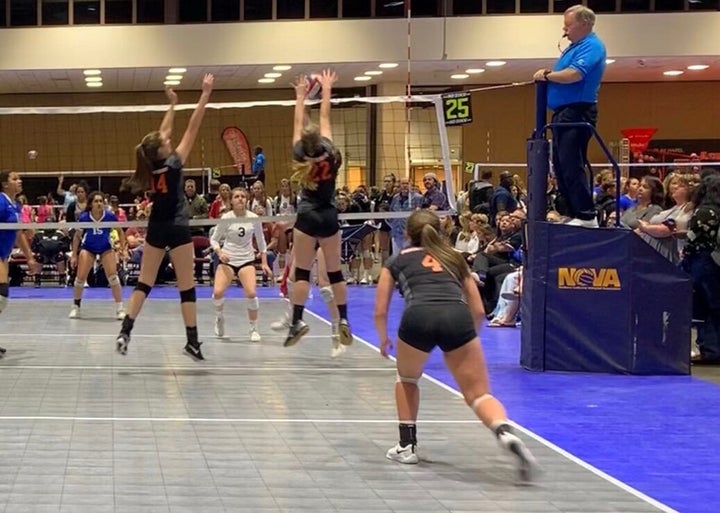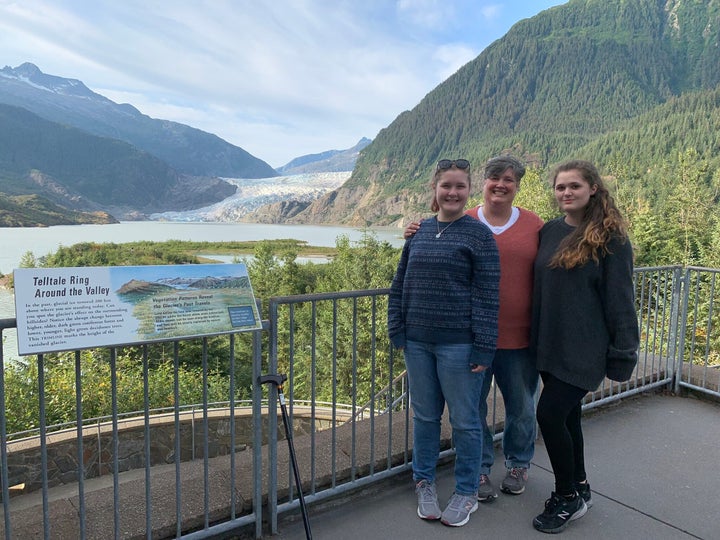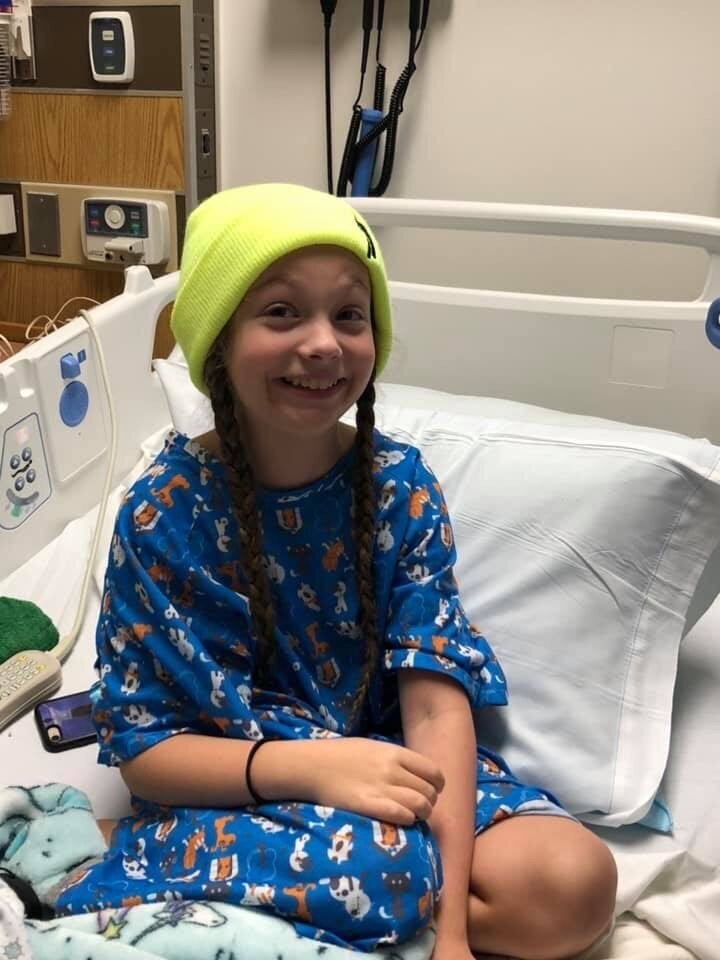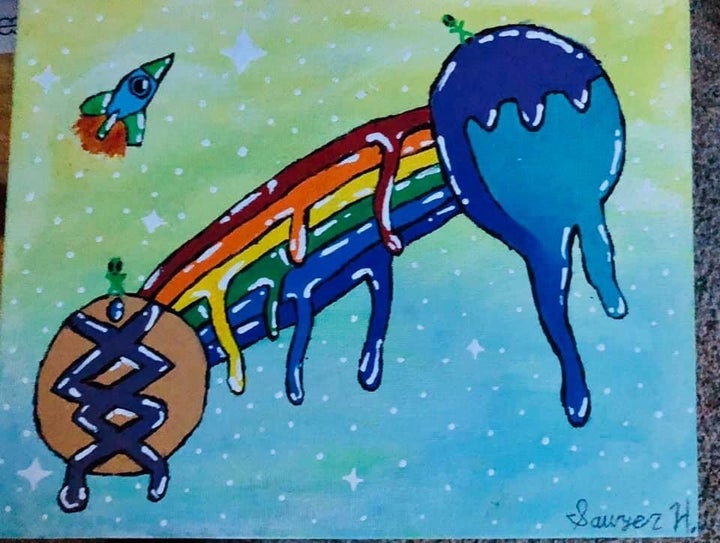Few things are harder for a parent than watching your child in pain. You want to take it from them, but you cannot. You want to comfort them and to help find them answers, but that’s not always possible.
Parents of children in chronic pain live with this challenge daily.
Estimates suggest that anywhere between 5 and 38% of children live with chronic pain. It not only affects their quality of life and that of their parents, it also increases the likelihood of this becoming a lifelong issue. More than 70% of children and adolescents who live with chronic pain struggle with it as adults.
“We’ve had, in my pediatric chronic pain clinic, some patients who come after seeing 42 doctors trying to find the cause of their pain, and the longer pain goes on, the less likely it is that there is a cause. It’s like a snowball,” said Dr. Lonnie Zeltzer, director of the UCLA Pediatric Pain Research Program and president of the nonprofit Creative Healing For Youth In Pain (CHYP). “It’s not simple. Medication alone is rarely the answer for chronic pain.” She describes chronic pain as a “sticky loop.”
As an additional hurdle, children who have no outward symptoms are often doubted.
“A lot of doctors are going to say it’s psychological or it’s school refusal, but parents need to believe their children and understand there can be a neuro-biologic process going on,” Zeltzer said.
Here, three parents describe in their own words what it is like to parent a child who lives with chronic pain.
“My daughter has not had a pain-free moment since last fall.”
My daughter will be 16 next month. Two years ago, she caught a horrible case of the flu. After that, she developed postural orthostatic tachycardia syndrome (POTS). For her, that means her blood vessels don’t constrict when she stands. She becomes severely lightheaded. She’s had sleep disturbances, stomach issues and a whole bunch of other issues. We’ve gotten that somewhat under control, a big part of which is keeping her active.
But then last fall, she came home from school and said: “My head is killing me. My head is killing me.” She’d never had migraines before. I put her to bed and told her: “You’re definitely going to feel better tomorrow.” That was Oct. 17. She has not had a pain-free second since then.
When you parent a child in this type of pain, you talk about the pain scale a lot. Her pain varies, but it never goes below a level 4. When it’s there, she can function. When the pain is at a 9 or a 10 — which happens once a day, or once every other day — everything stops. We do have a prescription for Imitrex, a headache medicine, which will sometimes bring it down to a 5 or 6, but it takes time. She will just cry and cry. She feels really defeated and gets overwhelmed. I’ve found that if I can just touch her — if I can rub her neck or rub her back — I can kind of help her ride the wave. A little bit.
We’ve done MRIs. We’ve gone to the chiropractor. We’ve done massage. We’ve done sports medicine (she plays volleyball, so we wanted to rule out anything to do with that). She did finally get a diagnosis: new daily persistent headache. She’s tried the typical migraine medications, but they haven’t worked and she doesn’t really want to take meds. Nothing has touched the pain for her. The next thing on our list to try is acupuncture.

I’d say initially we were fighting to find a cure, like, what’s wrong? What happened? How do we fix it? Now I’d say we went through a bit of a mourning process, and we’re much more focused on helping her adjust to this new way of life. She sees a therapist. We have her primary care physician. We have a neurologist. And we’ve just been referred to UCSF’s pediatric pain clinic, which will create a plan to help her adjust to life with pain.
She’s been a straight-A student, and her schoolwork is suffering, which is difficult. She has also probably become a little more withdrawn. Her peers just don’t understand. People will say things like, “Well, she’s still playing volleyball. She’s obviously not hurting that bad.” But the joy she gets from playing volleyball momentarily overrides the pain. As soon as nobody’s watching, I can see it in her brain and body. She just collapses.
It’s hard as a parent because all you want is to be able to take that pain away. It’s hard to find balance. I know she’s in pain and she’s suffering, but I try not to let her responsibilities slide. I still make her do her chores. I’m trying to teach her to recognize her own strengths and limitations, so she can prioritize how she uses her energy. She’s such a strong student and athlete. She’s very loving. She’s very empathetic. She’s always been a very positive person and in the last few months I think she’s losing that a bit, so we’re trying to help her hold on to all of those things. — Stephanie, 41, California
“Doctors have told me it’s all in their heads.”

I have a 16-year-old girl, Hannah, and 14-year-old girl, Kate. They’ve both been diagnosed with hypermobility spectrum disorder. When Hannah was 11, she started having chronic, debilitating joint pain, which started in her hip. We took her to the pediatrician and they told us to try physical therapy. She did six weeks, but the pain never got better. Six months later, her knee started hurting. We took her to an orthopedist who took X-rays and everything looked fine, so she did another round of PT. That’s when her finger started hurting.
Once the pain moved into a different region of her body, that’s when we really started going to a bunch of different doctors. Everybody gave her just kind of a, “Huh. We don’t know what it is.” Or we got answers like, “It’s in her head. She’s making it up.” We spent the next four years trying to get to what it was, until we finally saw one doctor who put it all together. Now, Hannah has told me that she can remember being 4 or 5 and walking up the stairs and really hurting, but she just assumed it was a kid thing. We had no idea. She was never really active, but she was social and she has always been this happy, positive person.
Kate was different. She was always running around and playing, and then all of a sudden — when she was 11 or 12 — she started complaining about her knees hurting. At first, I tried not to overplay it because I figured that maybe she had heard her sister talking about her pain. All of her symptoms were different than Hannah’s. She presented with TMJ first, then she struggled with some depression and anxiety, and then her pain really started. She was born with her patellas in the wrong location, but we only found that out about two years ago. We took her to the orthopedist, who was like “Oh, yep, her kneecaps are in the wrong place.” She went through double knee surgery in December. That was one of the hardest mom times I’ve had. She was in the hospital for two days, just screaming in pain. It was horrible.
I think we’ve seen about 20 doctors between my two girls. What’s frustrating is that they tend to stay in their own boxes. So, you’ll tell them all the symptoms and they’ll say something like: “Oh, well, there is no way in which those are all connected.” Financially, it’s been awful. Last year alone, we spent $22,000 in out-of-pocket costs — and we have very good insurance. We’re very middle-class people. It breaks us, every year.
When I’d hear someone questioning whether the girls were making this up, it’d make me momentarily rethink my sanity. I’d ask myself, “Wait, do I have two hypochondriac children? How did I do this?”
But then I’d see Hannah limping in the hallway I’d think, no. She doesn’t know I’m watching right now. She is limping because she is in pain. Kate is in her bedroom icing her knee and wrapping it. Kids don’t do that unless they’re really hurt. Pretty early on, I decided that I need to be the one who always believes them and fights for them. — Sydney, 47, Virginia
“I try and find moments of joy in the day. For her, it’s ‘The Ellen Show.’”

Sawyer is 11. When she was about 2 and a half, she started showing signs of being in pain. I’m a massage therapist and a yoga instructor who specializes in dealing with people in pain, so I noticed that she was doing things like rubbing her elbow as if it were in pain — which, for a toddler, is just really bizarre. I took her to the doctor, and they basically said it was nothing. Then, one day when she was 3 and a half, her dad took her sledding. When she came in, she couldn’t walk anymore. She was holding behind both of her knees and just screaming and crying. We took her to the pediatrician, who told us it was growing pains. That’s when I knew we needed to see someone else.
Eventually, we found our way to a genetic specialist and got an official diagnosis: Ehlers-Danlos. That has answered a lot of questions, but for the past five or six years, things have just gotten worse. We started using her stroller again. She started getting dizzy, getting belly pain, all of which became a daily thing. By the time she was in kindergarten, doing a full day was hell. I was teaching at the time and I had to stop. That’s when life really shifted for me, because it was this moment of realizing that I can’t do what I do professionally, because she needs me.
Sawyer has now developed what’s called central sensitization syndrome, so her brain and nervous system have basically decided everything hurts, all the time. She’s in 5th grade but she’s only made it to one and a half days this year. She is insanely smart, but she does not have it in her body to go to school right now. She sees a tutor. We try not to have her stay in bed all day, but some days she does.
She definitely has some really down moments. She’d really like to go to school, and she loves to dance and play sports, and she’s so frustrated that she can’t. That’s hard on anyone, but it’s a lot for an 11-year-old. We’ve worked it out where if she does her homework with her tutor, she can see her friends for a few hours and we’ll deal with the pain later. She does a lot of art — and art therapy. I try and find moments of joy in the day and week for her. For her, “The Ellen Show” is it. Ellen has probably saved her life a thousand times. She listens to the musical “Hamilton.” We listen to it a lot.

I do think that sometimes my friends with totally healthy kids think I’m crazy. I always say that the worse her body gets, the less room I have for any other information. I’m so focused on getting her through it. It’s like, “Oh, you want me to learn this? I have no room in my brain.”
At this point, we’re broke, and I’ll go more broke if we need to, and of course that’s a balance because there are people who are out there who will take advantage of that. We’ve seen some of the best pain specialists, and I feel like we’ve done a ton — and she doesn’t feel better. She lives right now on that pain scale at about an 8, 8 and a half every day. We haven’t been able to really break that. — Rachel, 45, Illinois
Conversations have been edited and condensed for clarity.
